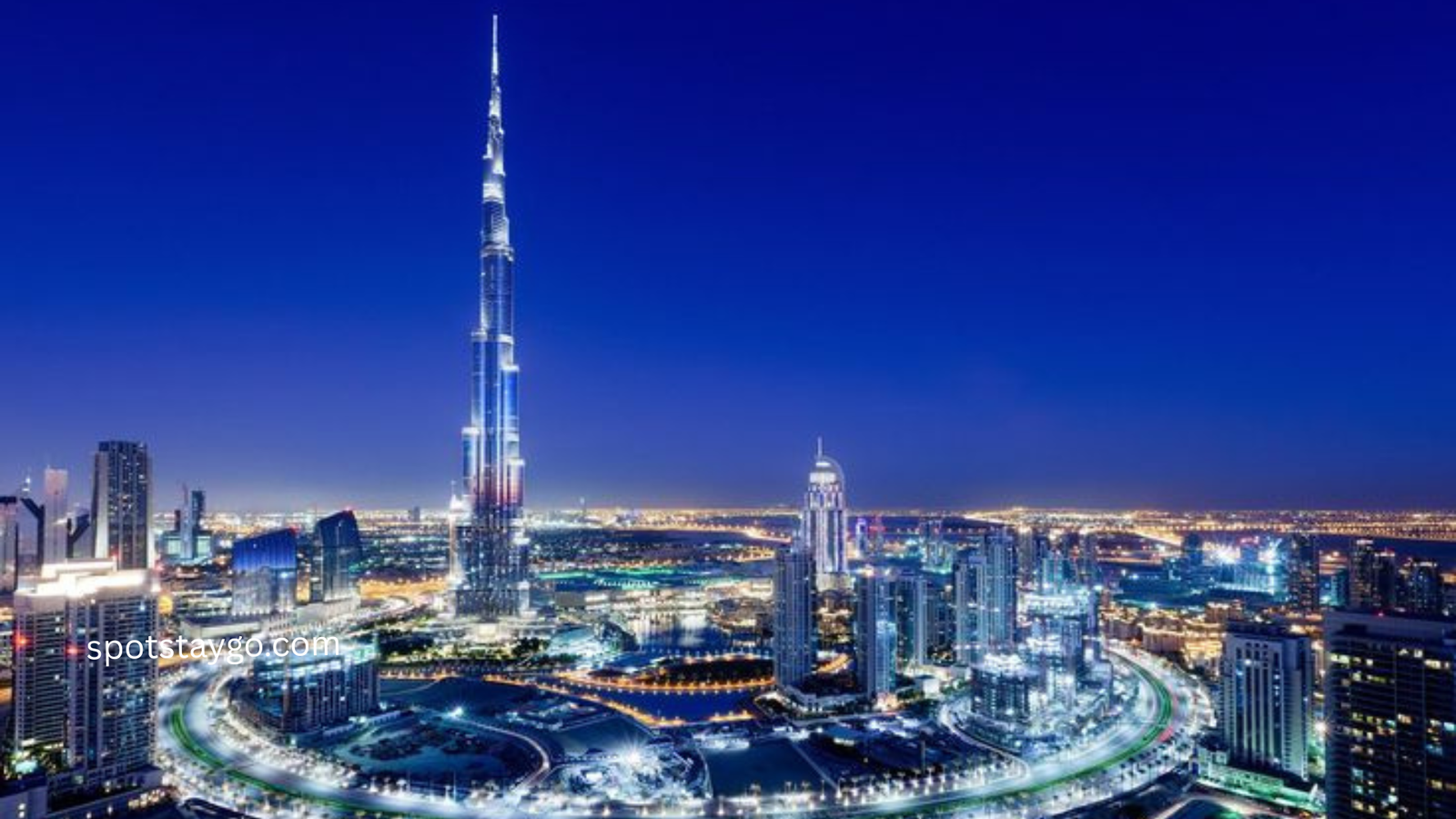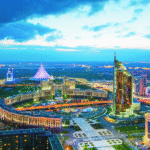Top 10 Iconic Cities to Visit in Asia- Asia, also known as Jambudweep, is the largest continent in the world in terms of both area and population. The continent is primarily located in the Northern Hemisphere, north of the Equator. To the west, Asia shares its boundaries with Europe, although there is no universally accepted or clearly defined border between the two. Often, Asia and Europe together are referred to as “Eurasia,” a vast continental landmass.
Asia is surrounded by several major water bodies, including the Mediterranean Sea, the Black Sea, the Arctic Ocean, the Pacific Ocean, and the Indian Ocean. Natural mountain ranges such as the Caucasus Mountains and the Ural Mountains are commonly considered as the geographical dividing lines between Asia and Europe.
Top 10 Iconic Cities to Visit in Asia-
Some of the finest cities in Asia include Tokyo, Japan, known for its unique blend of modernity and traditional culture; Bangkok, Thailand, famous for its vibrant street food scene and ornate temples; and Singapore, a prosperous city-state renowned for its stunning architecture and diverse hawker food centers.
Other top and popular travel destinations include Kyoto, Japan, known for its rich cultural heritage, and Seoul, South Korea, a dynamic hub of technology and culture.
Top 10 Iconic Cities to Visit in Asia, Which Included-
| Tokyo, Japan | Bangkok, Thailand |
| Singapore | Kyoto, Japan |
| Hong Kong | Mumbai, India |
| Seoul, South Korea | Dubai, UAE |
| Kathmandu, Nepal | Hanoi, Vietnam |
1. Tokyo–
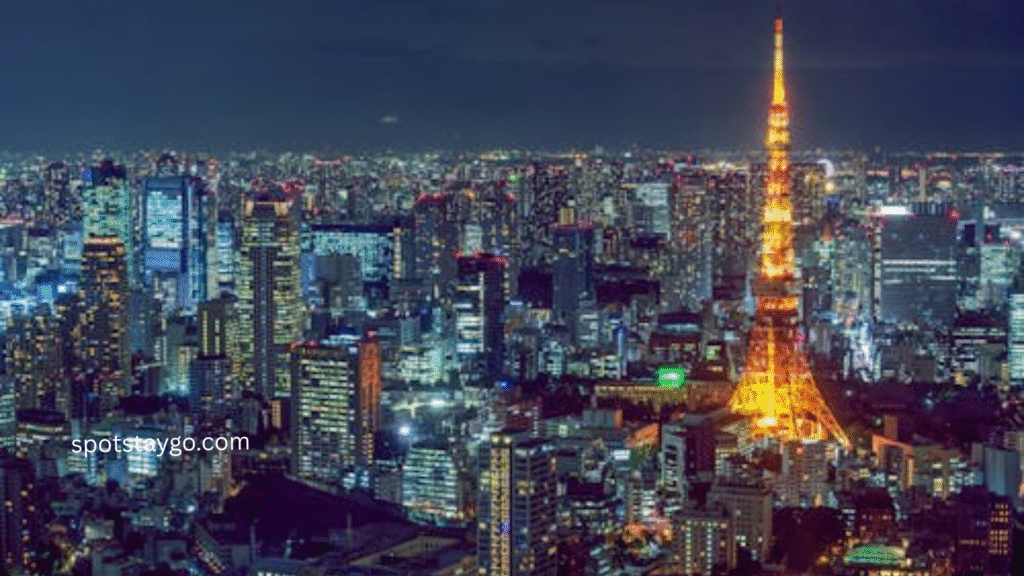
Tokyo, officially known as the “Tokyo Metropolis,” is the capital of Japan and its most populous city. As of 2023, the city’s population exceeded 14 million, making it one of the most densely populated urban areas in the world. The Greater Tokyo Area, which includes Tokyo and parts of six neighboring prefectures, is the largest metropolitan region globally, with a population reaching approximately 41 million by 2024.
Tokyo is located along the shores of Tokyo Bay and lies in the Kanto region on the southeastern coast of Japan’s largest island, Honshu. It serves not only as Japan’s leading economic hub but also as the seat of the Japanese government and the residence of the Emperor of Japan.
The Tokyo Metropolitan Government administers the city’s 23 special wards, which were once collectively known as Tokyo City. In addition to these wards, the metropolis includes suburban commuter towns in the western region and two outlying island chains collectively referred to as the Tokyo Islands.
Although Tokyo is commonly recognized worldwide as a city, its administrative structure has functioned like a prefecture since 1943, governed by an elected governor and metropolitan assembly that oversee the smaller municipal governments within the metropolis.
Major special wards in Tokyo include:
- Chiyoda, home to the National Diet Building (Japan’s parliament) and the Tokyo Imperial Palace.
- Shinjuku, which serves as the administrative center of the city.
- Shibuya, a major hub for commerce and business activities.
2. Bangkok-
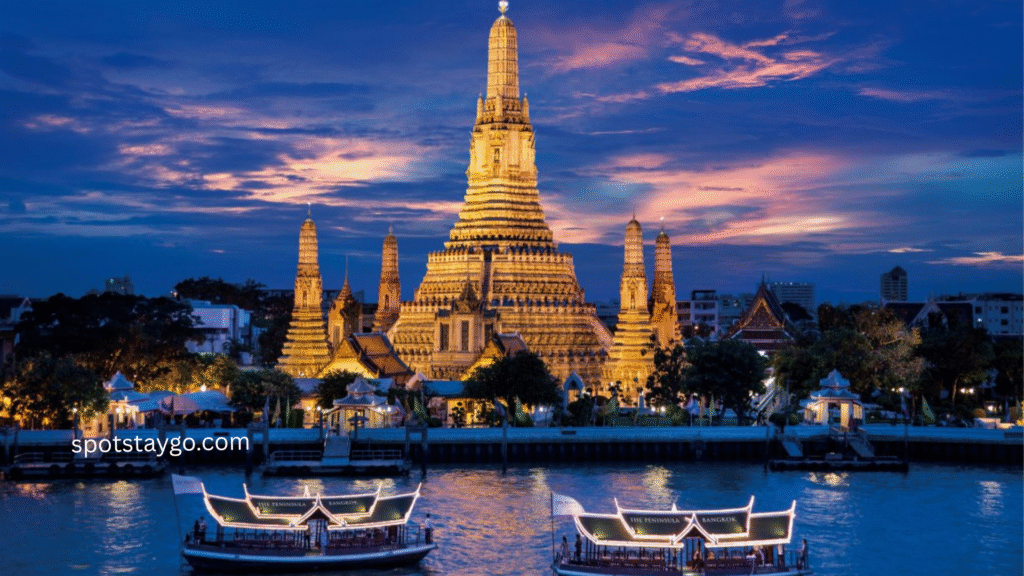
Bangkok, officially known in Thai as Krung Thep Maha Nakhon and commonly referred to simply as Krung Thep, is the capital and most populous city of Thailand. Located in the Chao Phraya River delta in central Thailand, the city spans an area of approximately 1,568.7 square kilometers (605.7 square miles). As of 2024, its estimated population is around 10 million, accounting for roughly 13% of the country’s total population.
According to 2021 estimates, the Bangkok Metropolitan Region is home to more than 17.4 million people—about 25% of Thailand’s total population—making it a megacity and an extreme primate city, one that significantly surpasses all other urban centers in the country in terms of size and economic-political importance.
Bangkok originated in the 15th century during the Ayutthaya period as a small trading post. It later became the site of two capital cities: Thonburi in 1767, and Rattanakosin in 1782.
In the late 19th century, as Siam (now Thailand) faced pressure from Western powers, Bangkok emerged as a focal point for the country’s modernization efforts. During the 20th century, it remained at the heart of Thailand’s political transformations, including the end of absolute monarchy, the adoption of a constitutional system, multiple coups, and uprisings.
In 1972, Bangkok was designated a special administrative area under the Bangkok Metropolitan Administration. From the 1960s to the 1980s, the city experienced rapid growth and today serves as a vital hub for Thailand’s politics, economy, education, media, and contemporary culture.
3. Singapore-

Singapore, officially the Republic of Singapore, is a sovereign island nation and city-state in Southeast Asia. It consists of one main island, 63 smaller islets, and one outlying island. Located about one degree north of the Equator (approximately 137 kilometers or 85 miles), it sits at the southern tip of the Malay Peninsula.
The country is surrounded by major bodies of water:
- West: the Strait of Malacca
- South: the Singapore Strait and the Riau Islands of Indonesia
- East: the South China Sea
- North: the Johor Strait, which separates it from Malaysia’s Johor state
Historically, Singapore was known as Temasek, a thriving maritime trading hub, and later became part of various sea-based empires.
Modern Singapore’s history began in 1819 when Sir Stamford Raffles founded it as a trading post for the British Empire. By 1867, it became part of the Straits Settlements under direct British colonial rule.
During World War II, Japan occupied Singapore in 1942, but it was returned to British control in 1945 after Japan’s defeat.
In 1959, Singapore attained self-governance, and in 1963, it joined the Federation of Malaysia alongside Malaya, North Borneo, and Sarawak. However, due to deep ideological differences, Singapore was expelled from the federation in 1965 and became an independent sovereign nation.
Despite early struggles—including a scarcity of natural resources and limited land—Singapore rapidly transformed into one of the Four Asian Tigers, recognized globally for its exceptional economic growth and industrial development.
4. Kyoto-
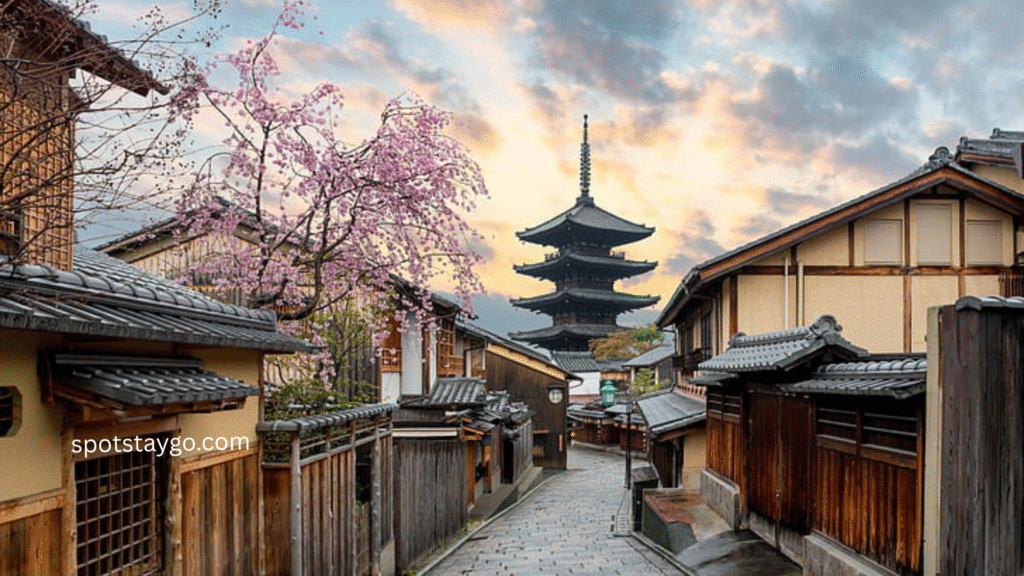
Kyoto, the capital city of Kyoto Prefecture, is located in the Kansai region on Honshu, Japan’s largest and most populous island. As of 2020, the city had a population of approximately 1.46 million, making it the ninth most populous city in Japan. Over 56.8% of Kyoto Prefecture’s total population resides within the city.
Kyoto serves as the cultural heart of the Greater Kyoto area, and is also an integral part of the Keihanshin metropolitan region, which includes Osaka and Kobe.
One of Japan’s oldest municipalities, Kyoto was chosen as the new imperial capital by Emperor Kanmu in the year 794 AD. The original city, named Heian-kyō, was designed based on the models of ancient Chinese capitals like Chang’an and Luoyang, and laid out according to the principles of traditional Chinese feng shui.
For nearly 1,100 years, Kyoto served as the seat of Japan’s emperors. It was also the site of many significant events throughout Japanese history, including the Ōnin War, the Honnō-ji Incident, the Kinmon Incident, and the Battle of Toba–Fushimi, spanning eras such as the Muromachi period, Sengoku period, and the Boshin War.
Following the Meiji Restoration, the capital was officially moved from Kyoto to Tokyo. Kyoto’s modern municipal government was established in 1889.
During World War II, Kyoto was largely spared from devastating bombing, allowing much of its pre-war cultural heritage to remain intact and well-preserved to this day.
5. Hong Kong-
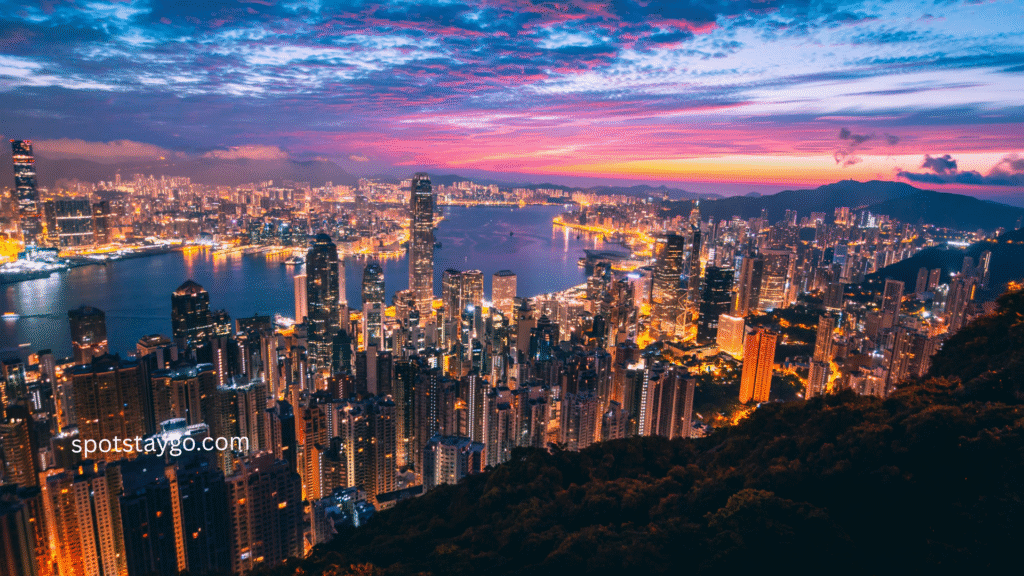
Hong Kong is a Special Administrative Region of China, spanning approximately 1,114 square kilometers (430 square miles) and home to about 7.5 million residents, making it the fourth most densely populated area in the world.
It became a British colony after the Qing Dynasty ceded Hong Kong Island to Britain following its defeat in the First Opium War (1841–1842). The colony later expanded to include the Kowloon Peninsula in 1860, and in 1898, the United Kingdom secured a 99-year lease on the New Territories, further enlarging its reach.
From 1941 to 1945, during World War II, Japan occupied Hong Kong. In 1997, the territory was returned to China under a formal agreement with the United Kingdom.
Under the “one country, two systems” framework, Hong Kong maintains a separate legal, political, and economic system from mainland China, allowing it a significant degree of autonomy.
6. Mumbai-
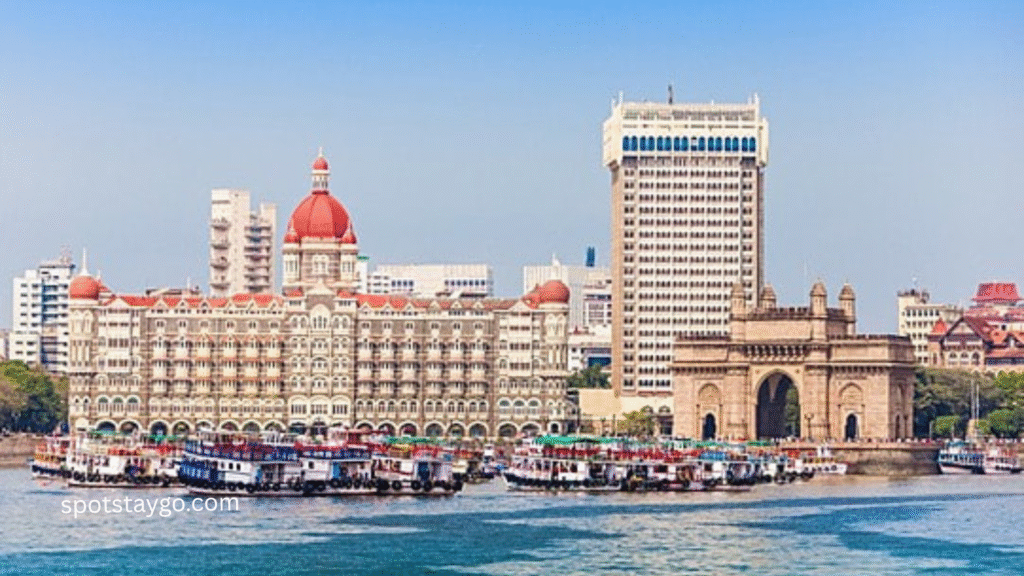
Mumbai, formerly known as Bombay (a name officially used until 1995), is the capital city of the Indian state of Maharashtra. With an estimated population of 12.5 million (1.25 crore), Mumbai is not only India’s most populous city but is also widely regarded as the country’s financial capital.
Mumbai serves as the core of the Mumbai Metropolitan Region, which has a total population exceeding 23 million (2.3 crore), making it one of the most densely populated metropolitan areas in the world.
Located on the Konkan coast along India’s western shoreline, the city boasts a natural deep-sea harbor, which has made it a vital hub for trade and maritime activity.
In 2008, Mumbai was designated as an Alpha World City, recognizing its significant global influence and connectivity as a major international metropolis.
7. Seoul-
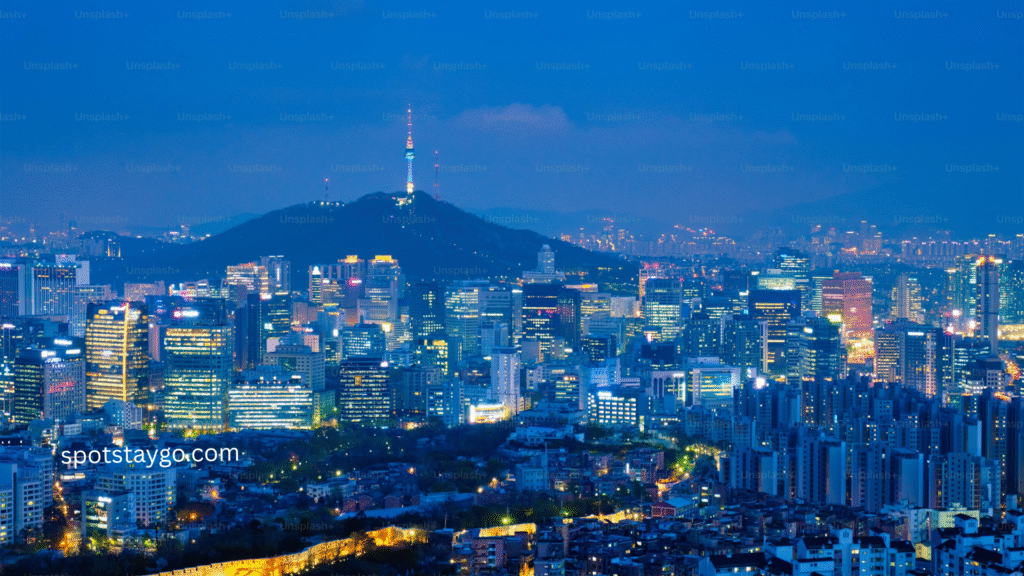
Seoul, officially known as the Seoul Special Metropolitan City, is the capital and largest city of South Korea. It forms part of the Greater Seoul Metropolitan Area, which includes Gyeonggi Province and Incheon, and by 2022, it emerged as the sixth-largest metropolitan economy in the world—following New York, Tokyo, Los Angeles, Paris, and London. This region is home to more than half of South Korea’s population.
Although Seoul’s population once exceeded 10 million, it has been gradually declining since 2014, reaching approximately 9.6 million by 2024. Seoul is also the seat of the South Korean government. Seoul has a deeply rooted history—its foundation dates back to 18 BCE, when it was established by the people of Baekje, one of the Three Kingdoms of Korea.
In the early 20th century, Seoul came under the control of the Japanese Empire and was temporarily renamed “Keijō” (known as “Gyeongseong” in Korean). During the Korean War, Seoul experienced intense battles, changing hands four times, and much of the city was left in ruins.
Despite this devastation, the city underwent rapid reconstruction and accelerated urbanization in the post-war years, transforming it into the political, economic, and cultural heart of modern South Korea.
8. Dubai-

Dubai, known in Modern Standard Arabic as Dubai, is the most populous city in the United Arab Emirates (UAE) and also serves as the capital of the Emirate of Dubai. The city is located on the southeastern coast of the Persian Gulf.
As of 2025, Dubai has an estimated population of around 4 million, with approximately 92% of its residents being expatriates. The city’s greater metropolitan area includes Sharjah, which had a population of 5 million by 2023, while the broader Dubai–Sharjah–Ajman metropolitan region is home to approximately 6 million people.
Dubai was originally founded in the early 18th century as a small pearl diving and fishing village. It evolved into a regional trading hub after declaring itself a free port in 1901 and expanding the Dubai Creek in 1961.
Between the 1960s and 1990s, Dubai received modest revenues from oil, which helped fuel its initial development. However, during this time, the city began actively diversifying its economy.
By 2018, oil production accounted for less than 1% of Dubai’s Gross Domestic Product (GDP), highlighting its transition into a primarily non-oil-based economy.
9. Kathmandu-
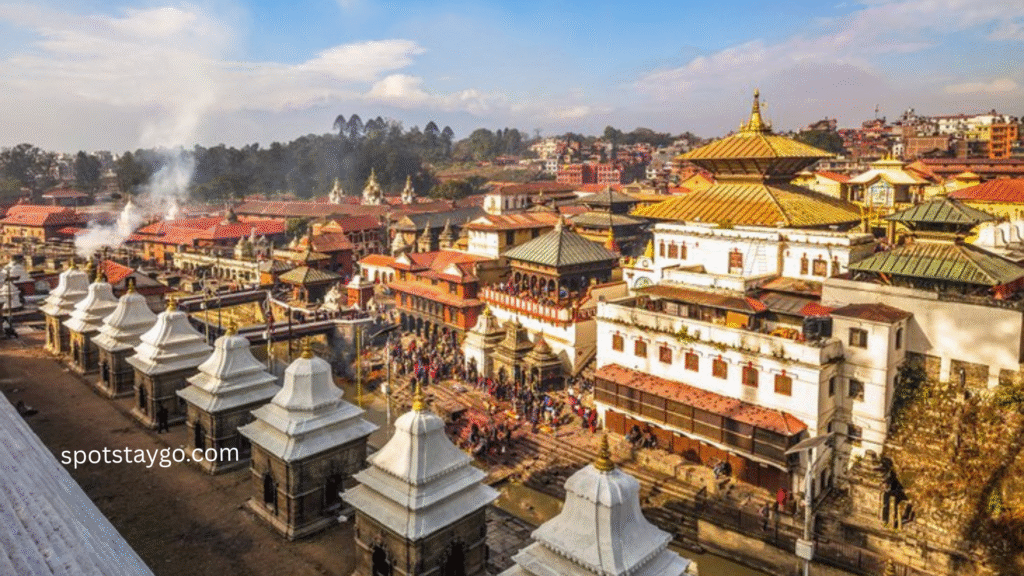
Kathmandu, the capital and largest city of Nepal, is located in the central part of the country, nestled within the Kathmandu Valley. According to the 2021 Nepal census, the city has a population of approximately 845,767, residing in 105,649 households, while the greater metropolitan area is home to nearly 4 million people. Kathmandu sits at an elevation of around 4,344 feet (1,324 meters) above sea level.
Recognized as one of the oldest continuously inhabited places in the world, the history of Kathmandu dates back to the 2nd century CE. Historically referred to as Nepal Mandala, the valley has long been the cultural and political center of the Newar people, a community that established a flourishing urban civilization in the Himalayan region.
Kathmandu once served as the royal capital of the Kingdom of Nepal, and its rich cultural heritage is still reflected today in its many palaces, temples, and gardens scattered throughout the city.
Furthermore, since 1985, Kathmandu has been the headquarters of the South Asian Association for Regional Cooperation (SAARC), making it an important diplomatic and administrative hub in South Asia.
10. Hanoi-
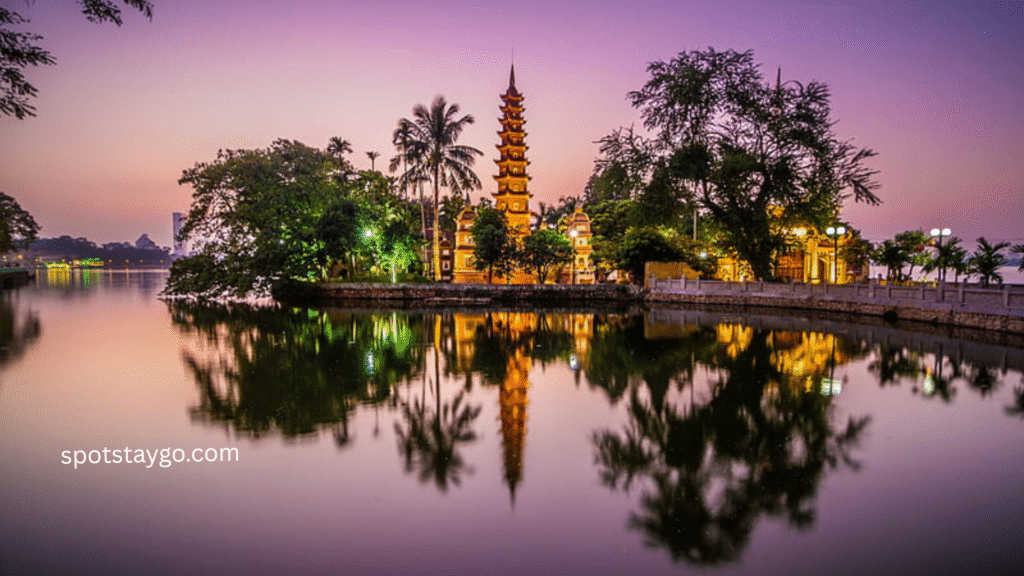
Hanoi is the capital of Vietnam and the country’s second most populous city. The name “Hanoi” means “inside the river,” reflecting its location between the Red River and the Black River.
As a municipality, Hanoi is made up of 12 urban districts, 17 rural districts, and 1 district-level town, covering an area of around 3,359.84 square kilometers (1,297.24 square miles). By 2024, the city’s population had grown to approximately 8.7 million.
In 2022, Hanoi recorded a Gross Regional Domestic Product (GRDP) of around 51.4 billion USD, making it the second-largest economy among all Vietnamese provinces and municipalities, following Ho Chi Minh City.
Top 20 Uncharted Places to Visit in Antarctica in 2025
Top 15 Ultimate London Destinations for 2025
